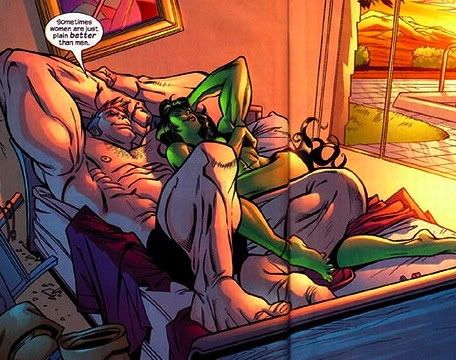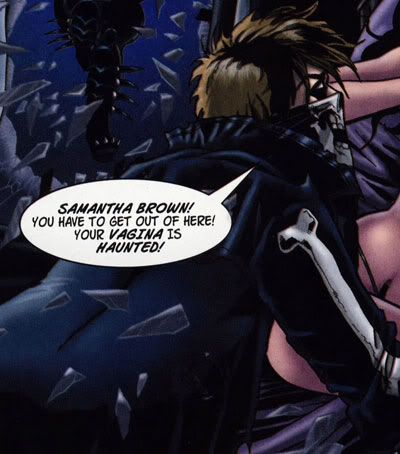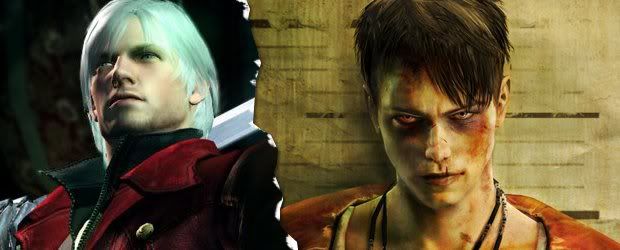This post has not been edited by the GamesBeat staff. Opinions by GamesBeat community writers do not necessarily reflect those of the staff.
After reading Chase Koeneke’s What games can learn from comic books, I began to wonder if there were any specific lessons that the medium could learn from the extensive experience of the comic book industry.
Unfortunately, history likes repetition, and games have already made some of the same mistakes that comics did years ago. So let's take a look at some of the lessons games should have learned from comics, but didn't.
1) The Chuck Austen lesson: Vote with your dollars
 Back in the early to mid 2000s, Chuck Austen was the writer for Uncanny X-Men (#410-442), and fans loathed his entire run. With plots points such as Nightcrawler’s demon daddy, Juggernaut/She-Hulk sexy time, and the Havok/Polaris/school nurse love triangle, fans derided Austen for focusing on the X-Men’s sexual escapades while ignoring the finer points of storytelling, like coherent plots and characterization.
Back in the early to mid 2000s, Chuck Austen was the writer for Uncanny X-Men (#410-442), and fans loathed his entire run. With plots points such as Nightcrawler’s demon daddy, Juggernaut/She-Hulk sexy time, and the Havok/Polaris/school nurse love triangle, fans derided Austen for focusing on the X-Men’s sexual escapades while ignoring the finer points of storytelling, like coherent plots and characterization.
When asked about Austen’s sordid run, then Marvel Editor-in-Chief Joe Quesada said that they had heard the fans’ complaints, but since the sales for the comic were still high, the complaints seemed to be coming from a vocal minority. He then urged fans to vote with their dollars.
They did not, and Uncanny X-Men remained one of Marvel’s top selling comics month after month after month, which is kind of like what we do as gamers.
We praise unfinished games, like Skyrim, and complain about an abundance of sequels, only to make Modern Warfare 3 the best selling entertainment product ever. Until publishers start to notice a difference in their bottom lines, they aren’t going to care what you don’t like because you’re still buying it.
2) The O.M.A.C Project lesson: Required tie-ins
Before Infinite Crisis began, DC Comics launched four mini-series that would serve as lead-ins for the big event, and The O.M.A.C Project proved to be the most precarious of the bunch.
In The O.M.A.C Project, former superhero Maxwell Lord is the primary antagonist. At the end of issue #3, he is alive and evil; however, he’s dead at the start of issue #4, and Wonder Woman killed him.
Between issues #3 and #4, DC ran a four part mini-series called "Sacrifice" that ran in all three of Superman’s comics and concluded in Wonder Woman’s. So, in order to understand Infinite Crisis, readers had to peruse The O.M.A.C Project and the other three lead-in mini-series, as well as the "Sacrifice" mini-series, for a total of 28 comics before the event even started.
While it would be easy enough for games to sidestep this issue, they haven’t. In Kingdom Hearts 2, Organization XIII plays a major part in story, but half of them are dead before the game begins. What happened? See Kingdom Hearts: Chain of Memories.
Mass Effect 3 finds itself in a similar position. At the start of the game, Commander Shepherd is supposed to be on trial. Why? See Mass Effect 2 DLC Arrival.
3) The Tarot lesson

Describing Tarot: Witch of the Black Rose is difficult at best. The comic is about a witch named Tarot with ridiculously huge breasts who runs around fighting bad guys while naked and getting chained up and molested.
She was also bit by an eel. On her ladyparts. And someone’s vagina was haunted.
The only reason I bring this nigh pornographic comic to light is because it is billed as "one of the most female-empowering comics on the stands." But there’s nothing empowering about a woman who can’t keep her clothes on.
Someone should have said this to Bayonetta’s creator Hideki Kamiya.
Bayonetta is a game that insists upon itself — mostly by insisting the titular character’s sexiness onto me, the player. She has guns as her heels, battles with poledancing moves, and loses her hair for her sadomasochist (S&M) torture attacks (which include sexually assaulting a female monster with a wooden horse), and she wears glasses. The game works really hard to convince me that Bayonetta is sexy.
I don’t find her the least bit sexy.
All I see is an oddly proportioned witch who (like Tarot) can’t seem to keep her clothes on and (like Tarot) finds herself in S&M situations in a story that makes little sense (like Tarot).
It’s not sexy. It’s not empowering. It’s just stupid.
4) The Hal Jordan/Kyle Rayner lesson
Back in the early 90’s, sales of Green Lantern dropped incredibly low. DC decided to have one Green Lantern character, Hal Jordan, turn evil and kill all of the other Green Lanterns so that they could re-launch the comic with new character, Kyle Rayner, as the last Green Lantern.
Fans lost their shit — going as far as taking out ads in Wizard magazine in protest.

Almost 20 years later, and Capcom decides to abandon Devil May Cry’s Dante in favor of a new emo Dante in DMC: Devil May Cry debacle.
Just like with the Green Lantern shift, the fan backlash was immediate and harsh, with some fans going as far as sending death threats to Ninja Theory over the reboot.
5) The Astonishing X-Men lesson: Fans don’t always know what they want
When Marvel announced that Joss Whedon would be writing an X-Men comic, fans were not pleased. They weren’t exactly calling for blood, but no one was really looking forward to Whedon’s take on the mutant team.
Joss Whedon’s Astonishing X-Men run went on to become an instant classic.
Metal Gear Rising: Revengance finds itself in a similar position. Even though it was handed off to Platinum Games, a studio with a proven track record, gamers still protested the change in gameplay to a hack-n-slash style akin to Bayonetta and Devil May Cry.
Although Rising might not be Metal Gear Solid 5, the game’s pedigree makes it worth trying.

This might not turn out to be all that bad.
6) The inbred lesson
During DC’s Blackest Night event, the leader of the Black Lanterns is revealed to be Nekron. Appropriately, my response was, "Who the fuck is Neckron?"
In an interview with Newsarama, comics legend Alan Moore described a phenomena in comics that he refers to as inbreeding. Moore says that "you have stories that are only capable of referencing other stories from five, 10, 40 years before."
Indeed, Nekron is an obscure villain from the 80's that has only appeared once or twice before being revealed as the big bad in Blackest Night.
While games may not face an inbred problem in terms of story, there is a case to be made for inbred gameplay.
In the interview, Alan Moore goes on to say that today’s comics are just "the same ideas recycled endlessly, and if you’re recycling your only fuel for decades, you’re only going to run out of any energy in your product."
Looking at games, how many sequels feature the same gameplay, with the only real change being the incremental number and/or subtitle added? This is why music games like Guitar Hero and Rock Band died, and is the same danger that yearly franchises like Call of Duty and Assassin’s Creed face.
I’m not saying that every game needs to be revolutionary, but when our choice for quality gaming comes down to which iron sight we want to look down, the dearth of original ideas are literally right in front of our faces.
7) The depowered Wonder Woman lesson
In the late 1960s, Wonder Woman lost her costume and powers so that she could learn martial arts and weapon skills to be a spy. In this move, DC intended Wonder Woman to become more like Emma Peel from the British television show The Avengers and thus a feminist hero.
Feminists argued that DC had taken away the only super-powered woman in comics.
Metroid’s Samus Aran resembles Wonder Woman as a female in a male-dominated role. A bounty hunter with a badass power suit, Samus was quiet, mysterious, and powerful, and like Wonder Woman, she was gaming's first female hero.
Metroid: Other M changed all of that.

This is how good characters go bad.
Other M, the latest entry in the series, turned Samus into an insecure and submissive woman who wanted the approval of her father figure and commanding officer, Adam. While Samus loses all of her abilities at the start of each game through some plot device, in Other M she simply wouldn’t use her abilities because Adam didn’t tell her to yet.
Wonder Woman got her powers back after a couple of years, so hopefully, Nintendo can restore Samus’ character.
8) The regulation lesson
Superheroes have become synonymous with comics. While they did start the comic-book boom of the 1940s (the Golden Age), after the end of World War 2 — when comics were selling almost 100 million issues monthly — superheroes were waning in popularity. Other genres, such as westerns, crime noir, and horror became increasingly popular, and this drew intense government scrutiny.
Thus, in the early 1950s, the Comics Code Authority was created, and many comics were censored. Extreme violence and gore were outright banned as were vampires, werewolves, zombies and the use of the word "horror" in the title of any comic book.
While the Comics Code Authority (CCA) was created by the comics industry and therefore not required by law, many retailers would not carry comics without the CCA seal of approval. These restrictions, along with a slew of others, led to the closure many publishers and almost destroyed the industry.
With this lesson in mind, the controversy surrounding violent video games in the early '90s doesn’t come as a surprise. Spearheaded by Joe Liberman and Herb Kohl, hearings were held to address the levels of realistic violence and sexuality in games. Aside from these matters in question, also at issue was a lack of ratings system for games, and this eventually lead to the creation of the Entertainment Software Ratings Board (ESRB).
Like the CCA, the ESRB is a voluntary industry entity, and almost every game is submitted for approval. Console manufactures won’t license games without an ESRB rating, and most retailers won’t carry games without one lower than the AO (Adult Only) rating.
But for some government officials, the ESRB alone wasn’t good enough, and it wasn’t until very recently that the legal debate surrounding violence in games was concluded.
With a similar history, the question remains, will the ESRB become irrelevant like the CCA? Probably not.
The main difference between the CCA and ESRB was that the CCA was specifically designed to censor the industry on a pass/fail basis whereas the ESRB was established to rate content and educate consumers like the MPAA. With some games doing as much or more business than films, the ESRB isn’t going anywhere anytime soon.
